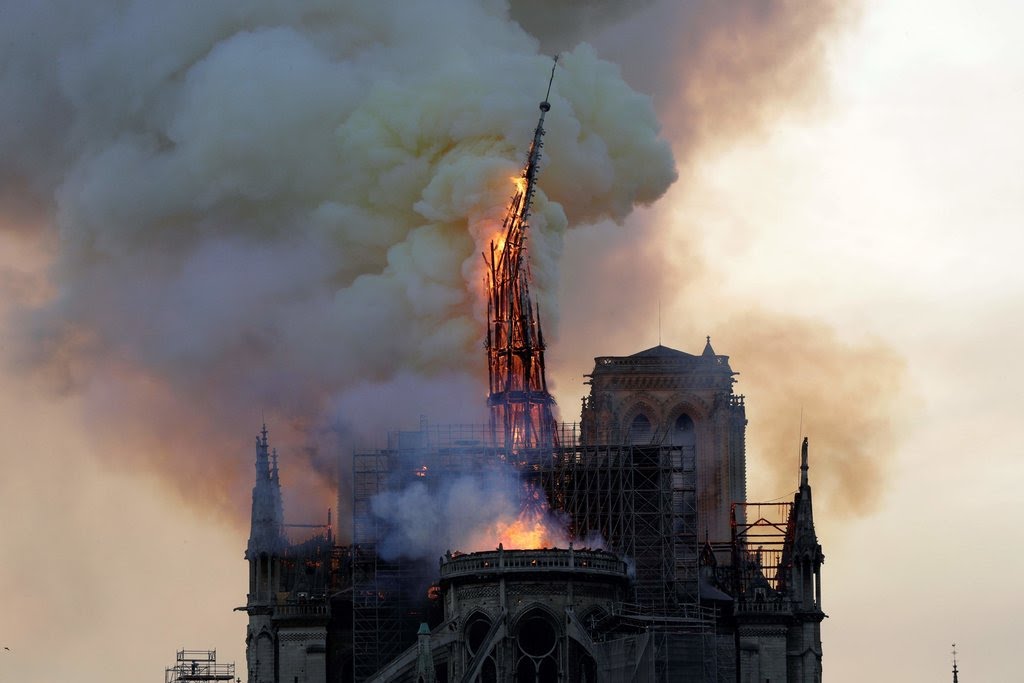
Notre-Dame cathedral, the iconic symbol of the beauty and history of Paris, was scarred by an extensive fire on Monday evening that collapsed part of its delicate spire, bruised the Parisian skies with smoke and further disheartened a city already back on its heels after weeks of violent protests.
The cause of the fire was not immediately known, André Finot, a spokesman for the cathedral, said in a telephone interview, and there was no immediate indication that anyone had been hurt.
But the spectacle of flames leaping from the cathedral’s wooden roof — its spire glowing red then turning into a virtual cinder — stunned thousands of onlookers who gathered along the banks of the Seine and packed into the plaza of the nearby Hotel de Ville, gasping and covering their mouths in horror and wiping away tears.
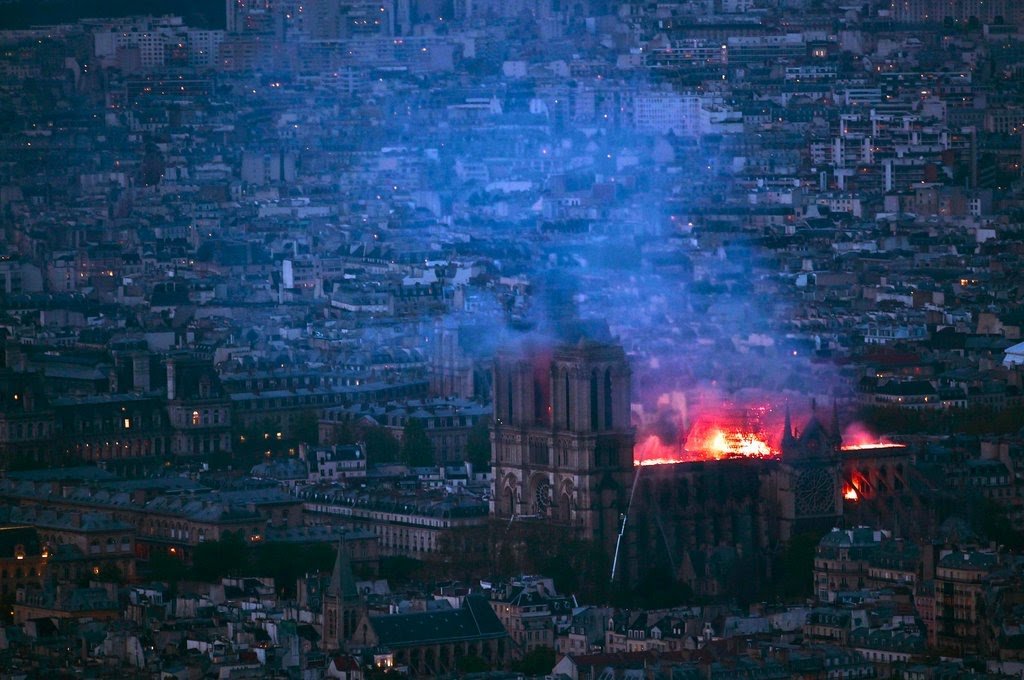
The fire broke out about 6:30 p.m., upending President Emmanuel Macron’s plans to deliver an important policy speech about trying to heal the country from months of “Yellow Vest” demonstrations that had already defaced major landmarks in the capital and disfigured some of its richest streets.
The tragedy seemed to underscore the challenges heaped before his administration that has struggled to reconcile the weight of France’s ideals and history with the necessity for change to meet the demands of the 21st century.
“It is like losing a member of one’s own family,” said Pierre Guillaume Bonnet, a 45-year-old marketing director. “For me there are so many memories tied up in it,” he said of the cathedral.
France’s Interior Ministry said that 400 firefighters were battling the blaze.
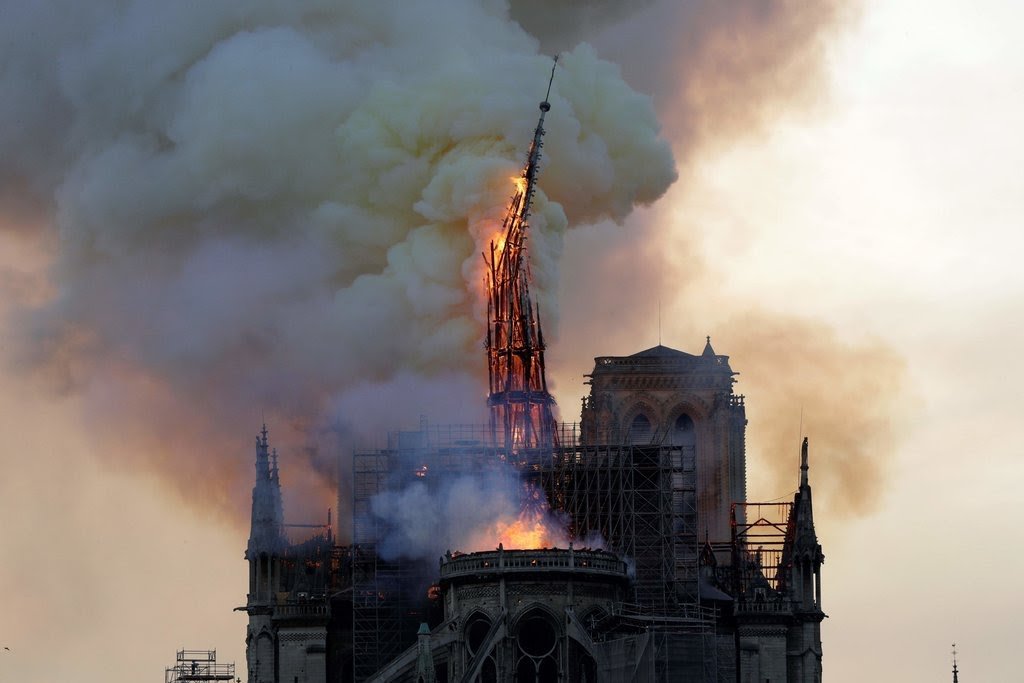
A jewel of medieval Gothic architecture built in the 12th and 13th centuries, Notre-Dame, others noted, was a landmark not only for Paris, where it squats firmly yet gracefully at its very center, but for all the world. The cathedral is visited by about 30,000 people a day and around 13 million people a year.
“This is just horrible,” said Mohamed Megdoul, 33, a film producer. “A thousand years of history which is being wiped away,” he said brushing away tears.
“This belonged to the whole world, and now it is disappearing,” he said.
As the last rush of tourists were trying to get in for the day, the doors of Notre-Dame were abruptly shut without explanation, witnesses said. Within moments, tiny bits of white smoke started rising from the spire — which, at 295 feet, was the highest part of the cathedral.
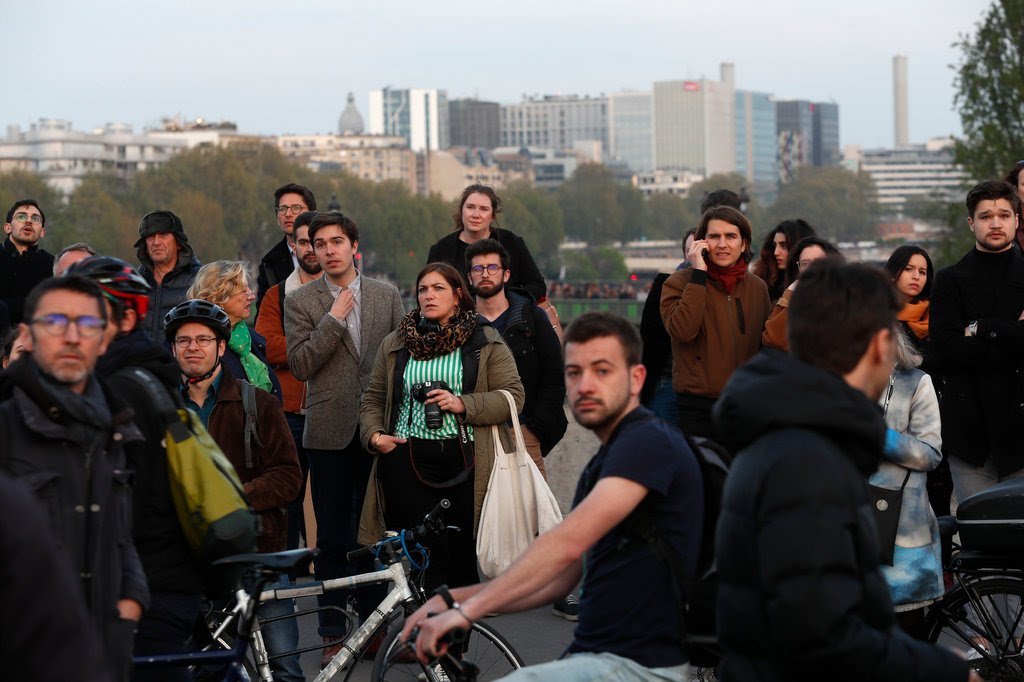
Billowing out, the smoke started turning gray, then black, making it clear that a fire was growing inside the cathedral, which is currently covered in scaffolding. Soon, orange flames began punching out of the spire, quickly increasing in intensity.
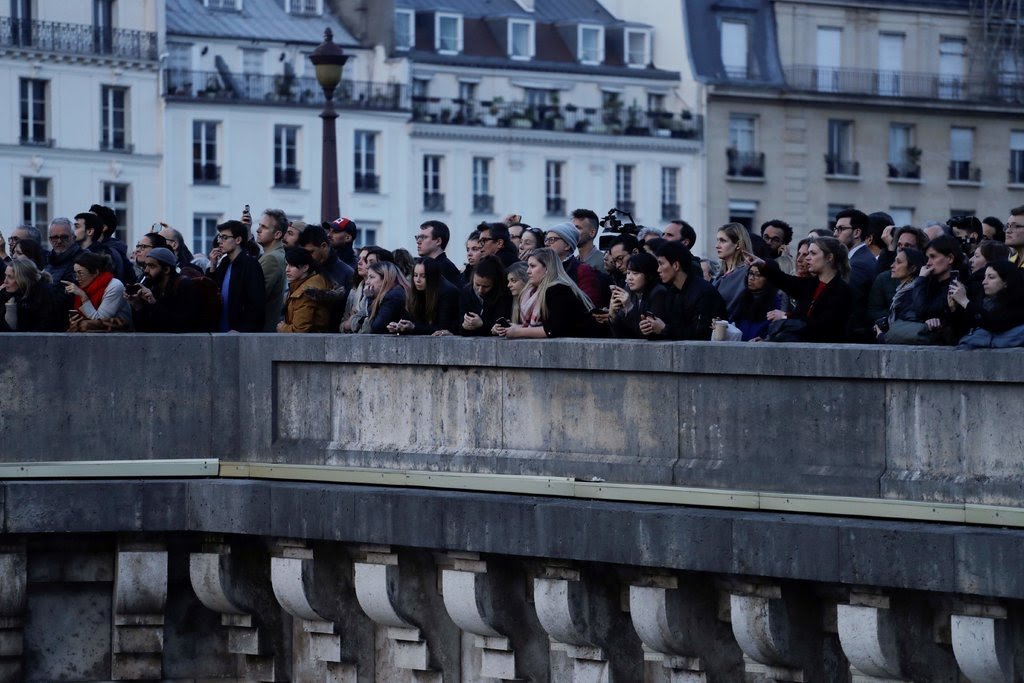
The French police rushed in and started blowing whistles, telling everyone to move back, witnesses said. By then, the flames were towering, spilling out of multiple parts of the cathedral. Tourists and residents alike came to a standstill, pulling out their phones to call their loved ones. Older Parisians began to cry, lamenting how their national treasure was quickly being lost.
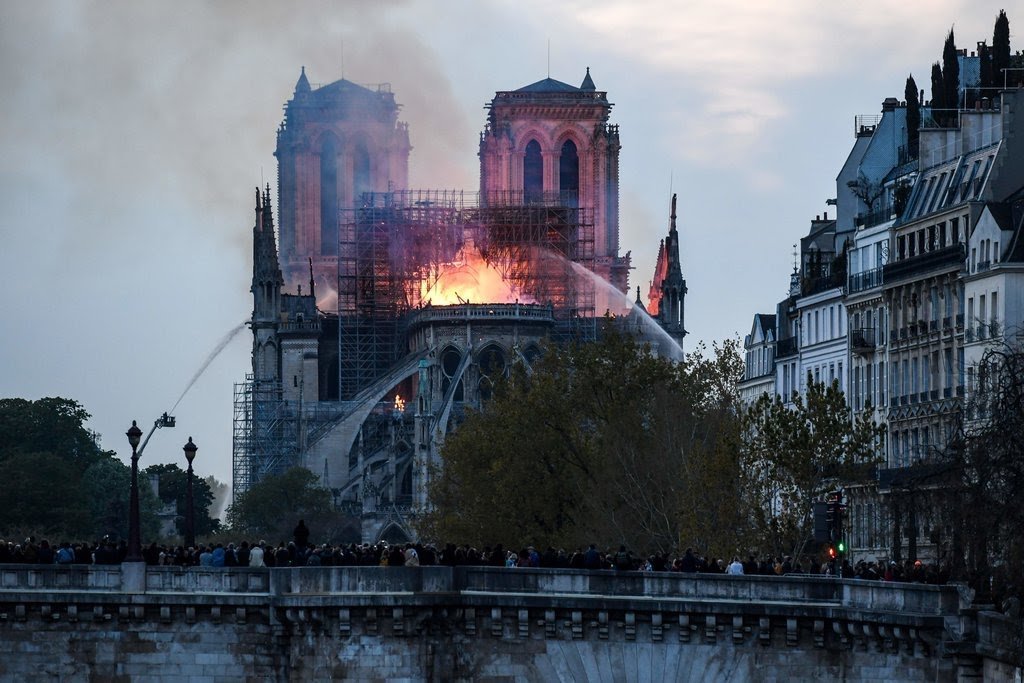
Thousands stood on the banks of the Seine river and watched in shock as the fire tore through the cathedral’s wooden roof and brought down part of the spire. Video filmed by onlookers and shared on social media showed smoke and flames billowing from the top of the cathedral.
Vincent Dunn, a fire consultant and former New York City fire chief, said that fire hose streams could not reach the top of such a cathedral, and that reaching the top on foot was often an arduous climb over winding steps.
“These cathedrals and houses of worship are built to burn,” he said. “If they weren’t houses of worship, they’d be condemned.”
Mayor Anne Hidalgo of Paris said on Twitter that “a terrible fire” had struck at the cathedral, and the city’s prosecutor’s office said it had opened an investigation.
The Paris police warned people to stay away from the area around the cathedral. And City Hall announced around 8:30 p.m. that all roads on Île de la Cité, the island in the heart of the city where Notre Dame is, were closed.
So horrible to watch the massive fire at Notre Dame Cathedral in Paris. Perhaps flying water tankers could be used to put it out. Must act quickly!
— Donald J. Trump (@realDonaldTrump) April 15, 2019
The cathedral is currently undergoing extensive renovation work. Last week, 16 copper statues representing the Twelve Apostles and four evangelists were lifted with a crane so that the spire could be renovated.
The cathedral had been in dire need of a thorough and expensive restoration, Mr. Finot, the cathedral spokesman, told The New York Times in 2017.
Broken gargoyles and fallen balustrades had been replaced by plastic pipes and wooden planks. Flying buttresses had been darkened by pollution and eroded by rainwater. Pinnacles had been propped up by beams and held together with straps. In some places, limestone crumbled at a finger’s touch.
Glenn Corbett, an associate professor of fire science at John Jay College in New York, said that construction work and renovations had long been a dangerous combination.
“There’s a history of churches and synagogues and other houses of worship falling victim to construction fires,” he said, adding that one of the reasons for the peril was the proximity of open flames on torches, sparks from welders and other hazards on scaffolding to other flammable materials.
“It hurts to watch this,” said Pierre-Eric Trimovillas, 32. “The cathedral is the symbol, the heart of Paris.”
The crowd gasped and cried in horror as the spire fell, Mr. Trimovillas said, adding, “Paris is beheaded.”
The crowds that had gathered were eerily calm, with little shouting or commotion.
Angelique de Almeida, 32, watched through tears. “We are going to lose her, everything is up in flames,” she said. “We lose this, we lose Paris. It is apocalyptic. And this is the Holy Week.”
President Macron said on Twitterthat “like all of our fellow citizens, I am sad tonight to see this part of us burn.”
The risk of the fire is not just to the cathedral itself, one of the world’s most important examples of Gothic architecture. The cathedral is renowned to visitors for the gargoyles that cover its walls and also the stained glass, particularly its “rose” windows.
The largest of its bells, which dates to 1681, managed to survive the French Revolution and has been rung at some of the most important events in French history, including both World Wars.
Yet the fire is likely to be just the latest, though surely one of the most dramatic, insult the landmark has endured through its more than 850-year history, including decades of neglect and damage, some at the hands of French revolutionaries.
Victor Hugo’s 1831 novel, “Notre-Dame of Paris,” noted even then that “one cannot but regret, cannot but feel indignant at the innumerable degradations and mutilations inflicted on the venerable pile, both by the action of time and the hand of man.”
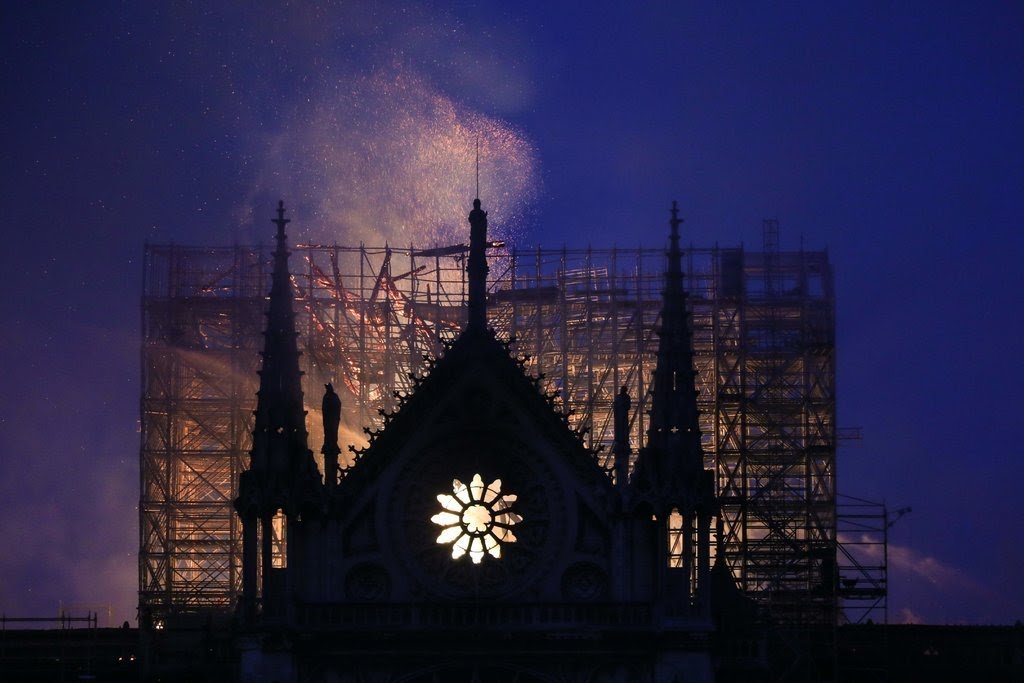
France’s Interior Ministry said that 400 firefighters were battling the blaze.CreditLudovic Marin/Agence France-Presse — Getty Images
In recent years, the Friends of Notre-Dame, a foundation based in the United States, estimated that the structure needed nearly $40 million for urgent repairs. The French state, which owns the cathedral, already devotes up to 2 million euros a year in upkeep, or about $2.4 million.
The German foreign minister, Heiko Maas, said in a tweet: “The burning of Notre Dame also hits us in the heart. Our thoughts are with all the forces and our French friends. Together with them, we hope that no one will be harmed by the fire.”
The French authorities, in an apparent response a tweet by President Trump that suggested using “flying water tankers” to stop the fire, stressed that the use of firefighting planes was too dangerous for the cathedral.
France’s emergency services said on Twitter that “dropping water by plane on this type of structure could cause the whole of the structure to collapse.”
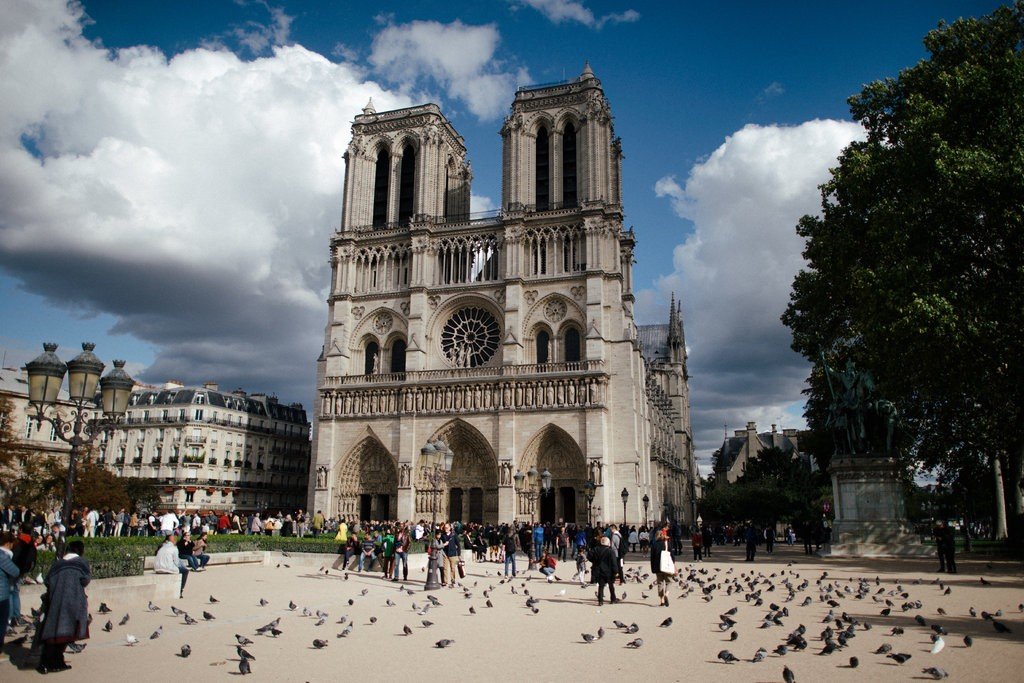
Notre-Dame is one of Paris’s most famous landmarks, drawing more than 12 million visitors a year.CreditDmitry Kostyukov for The New York Times
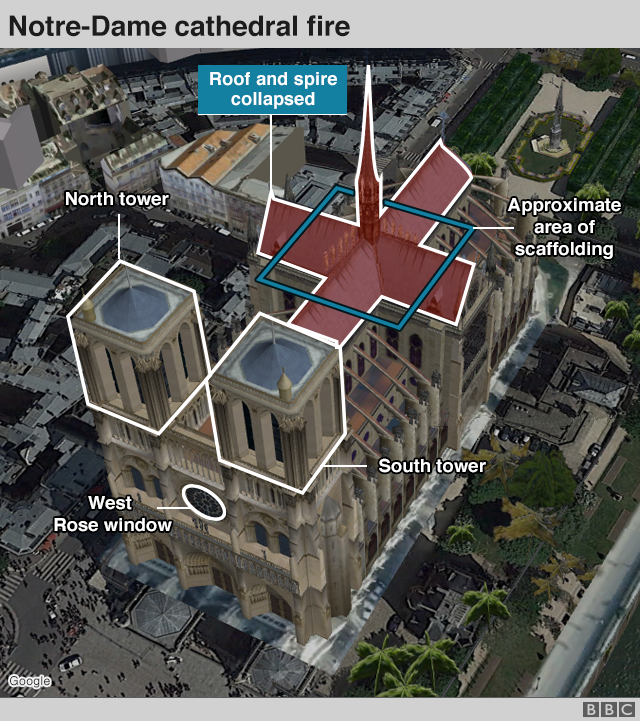
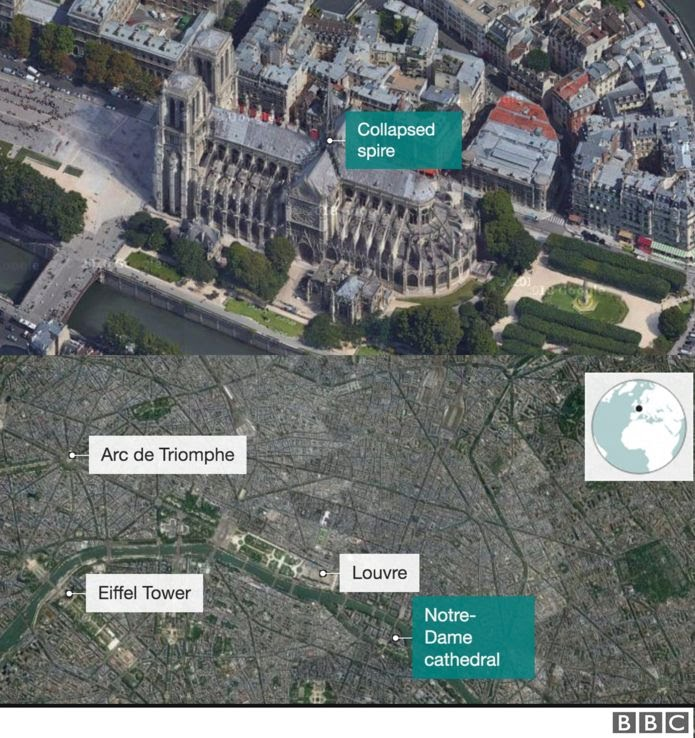
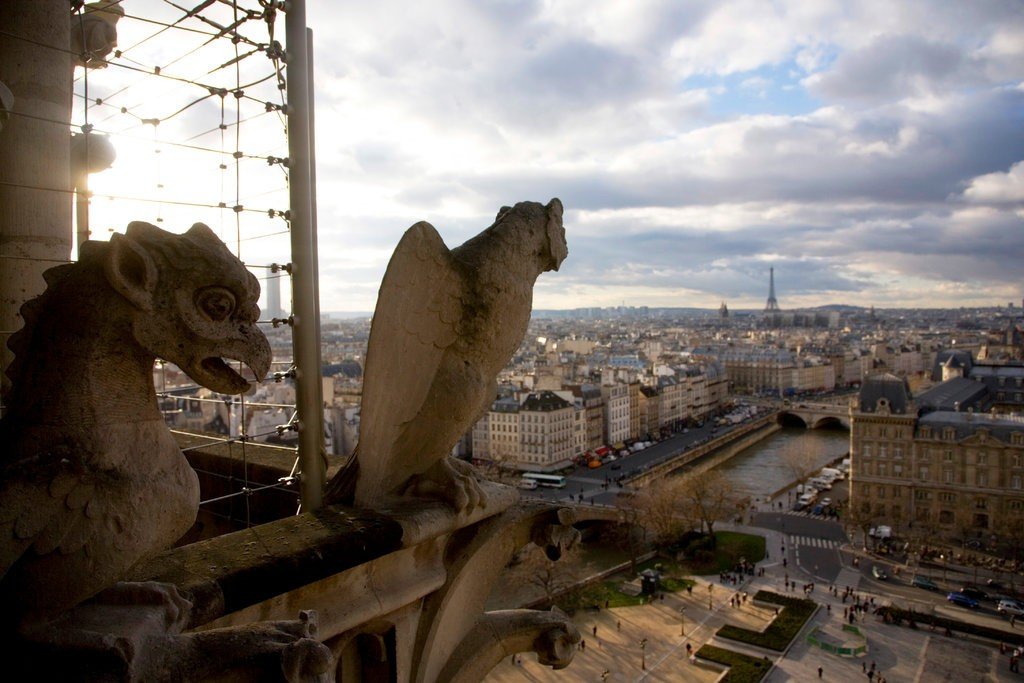
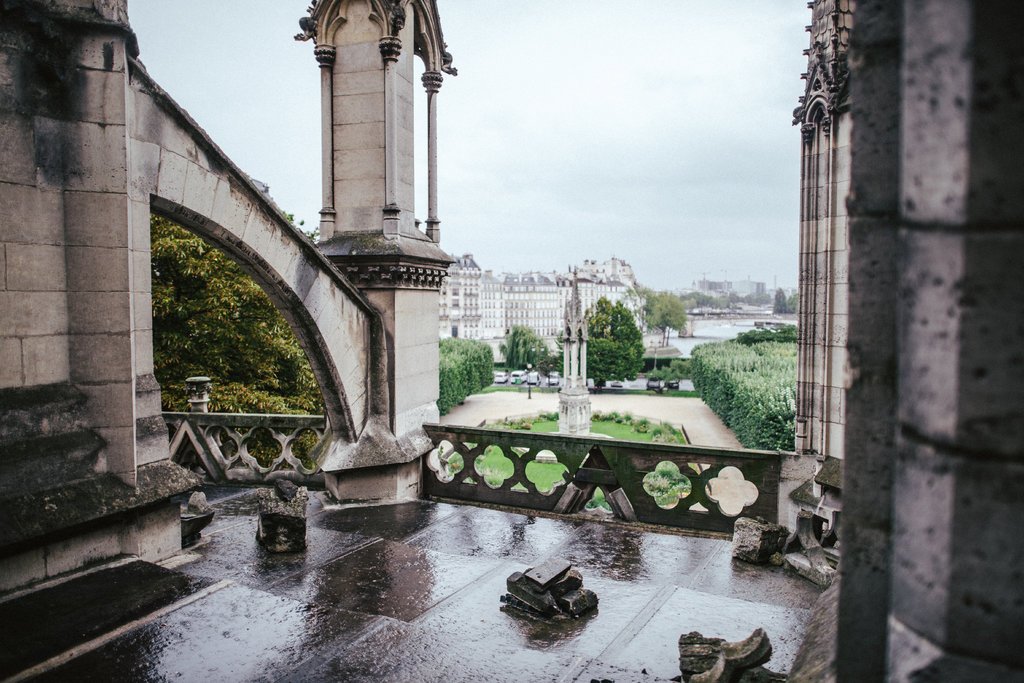
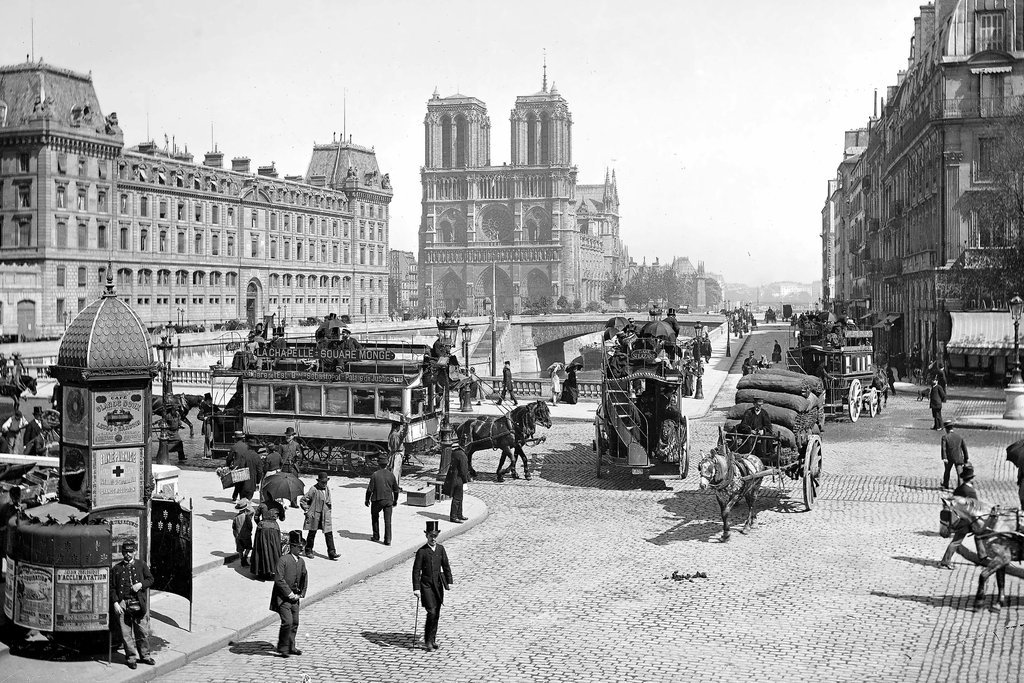
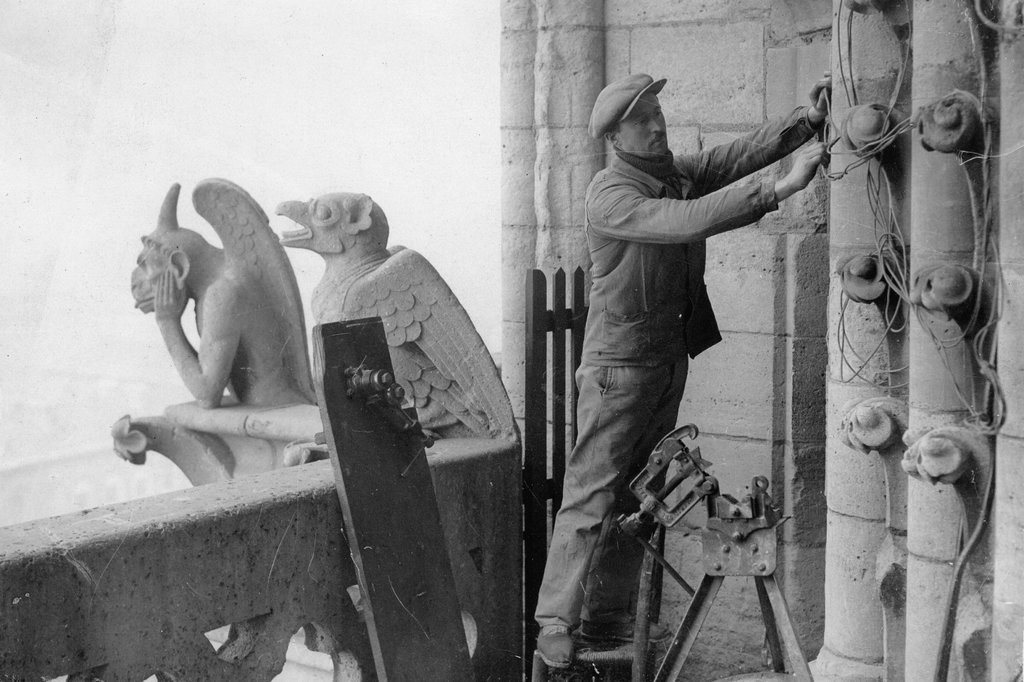
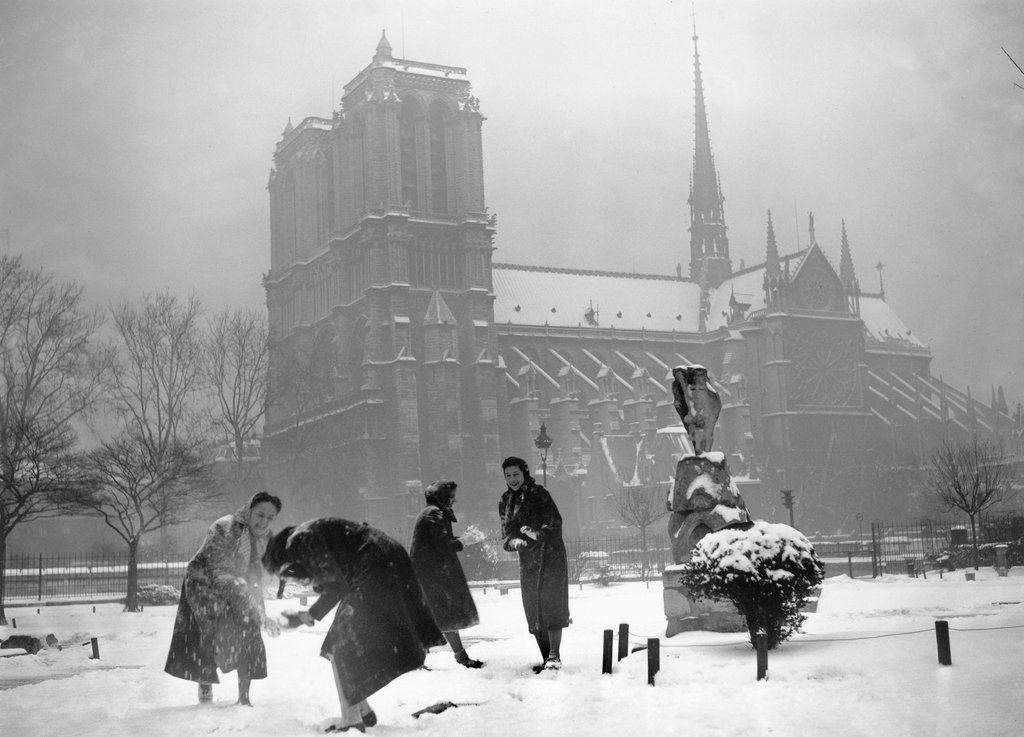
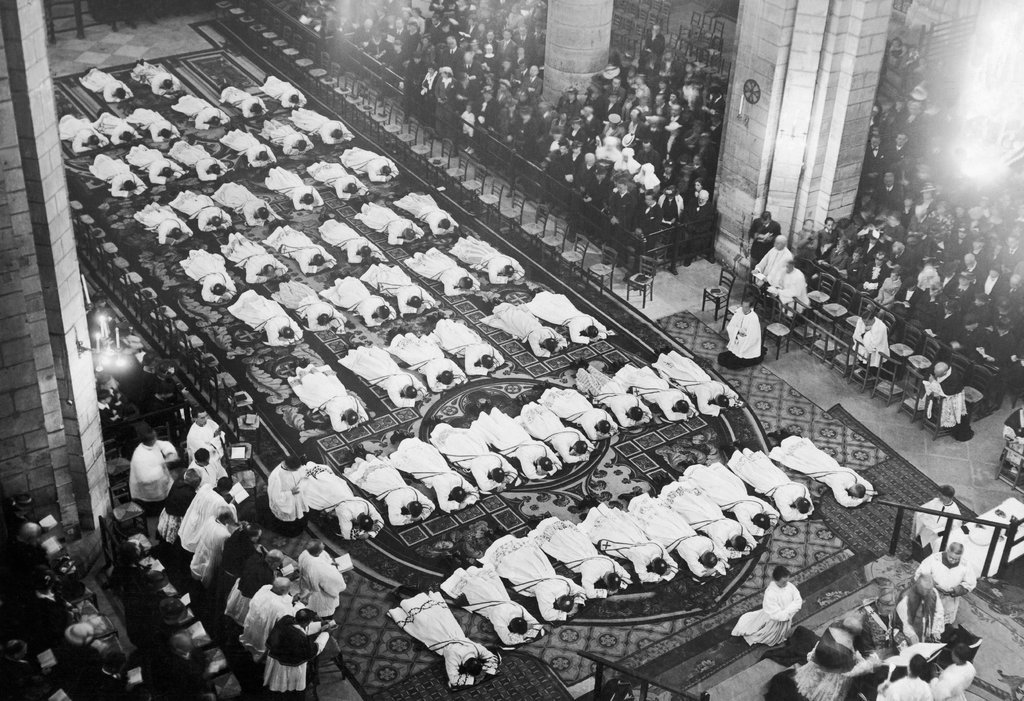
Devastated for our friends at #NotreDame and for the people of France.
You are in our thoughts and prayers tonight.
— Westminster Abbey (@wabbey) April 15, 2019
My heart goes out to Paris. Notre Dame is a symbol of our ability as human beings to unite for a higher purpose—to build breathtaking spaces for worship that no one person could have built on their own. I wish France strength and shared purpose as they grieve and rebuild.
— Hillary Clinton (@HillaryClinton) April 15, 2019
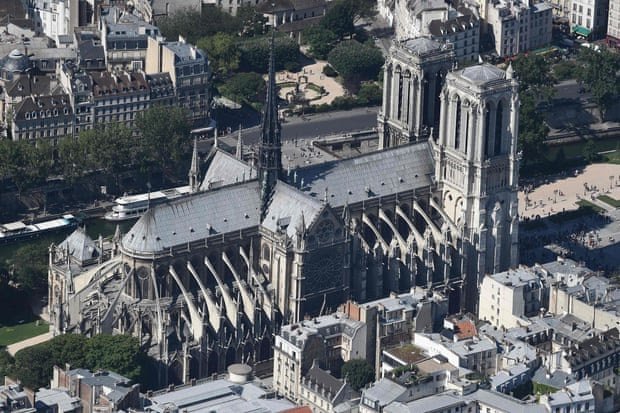
Credits to BBC and NY Times.
